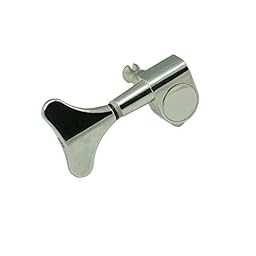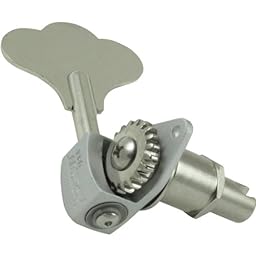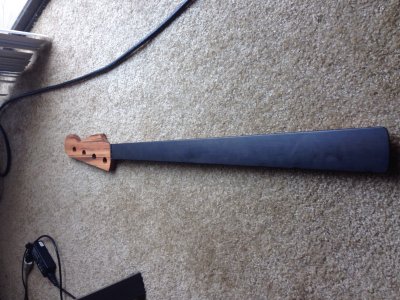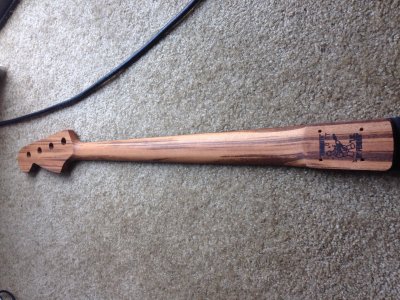SDbass
Junior Member
- Messages
- 37
'Sup gang! It's been, wow, nearly a decade since my last build.
I bought this neck from the showcase

I am planning for now to use black hardware, and given the weight of the neck, I want to use lighter tuners. I tentatively plan to use walnut w/ koa lam for the body, which should be heavy enough to not worry about neckdive, but I really hate neckdive so I'm a little paranoid. Plus, it would be a heavy bass anyway with the walnut body, so may as well save some total weight I figure.
I am looking for the smaller V-shaped cloverleaf over the vintage style W-shape if possible. It's the 17.5 hole.
Besides tuner recs, I want people's thoughts on these choices:
the walnut/koa body
villex single coils (w/Passive tone booster? Mid booster?)
babisz bridge (black)
I am leaning against the 70's pickup placement because I'm worried it'll be too thin and bright with the body choice and I assume (this would go for any pickup) that the bridge pickup was wired to the sound the creator envisioned at 60s placement, and I don't want to screw with his genius. I'm open to opinions on this too.
Thanks, guys
I bought this neck from the showcase

I am planning for now to use black hardware, and given the weight of the neck, I want to use lighter tuners. I tentatively plan to use walnut w/ koa lam for the body, which should be heavy enough to not worry about neckdive, but I really hate neckdive so I'm a little paranoid. Plus, it would be a heavy bass anyway with the walnut body, so may as well save some total weight I figure.
I am looking for the smaller V-shaped cloverleaf over the vintage style W-shape if possible. It's the 17.5 hole.
Besides tuner recs, I want people's thoughts on these choices:
the walnut/koa body
villex single coils (w/Passive tone booster? Mid booster?)
babisz bridge (black)
I am leaning against the 70's pickup placement because I'm worried it'll be too thin and bright with the body choice and I assume (this would go for any pickup) that the bridge pickup was wired to the sound the creator envisioned at 60s placement, and I don't want to screw with his genius. I'm open to opinions on this too.
Thanks, guys












